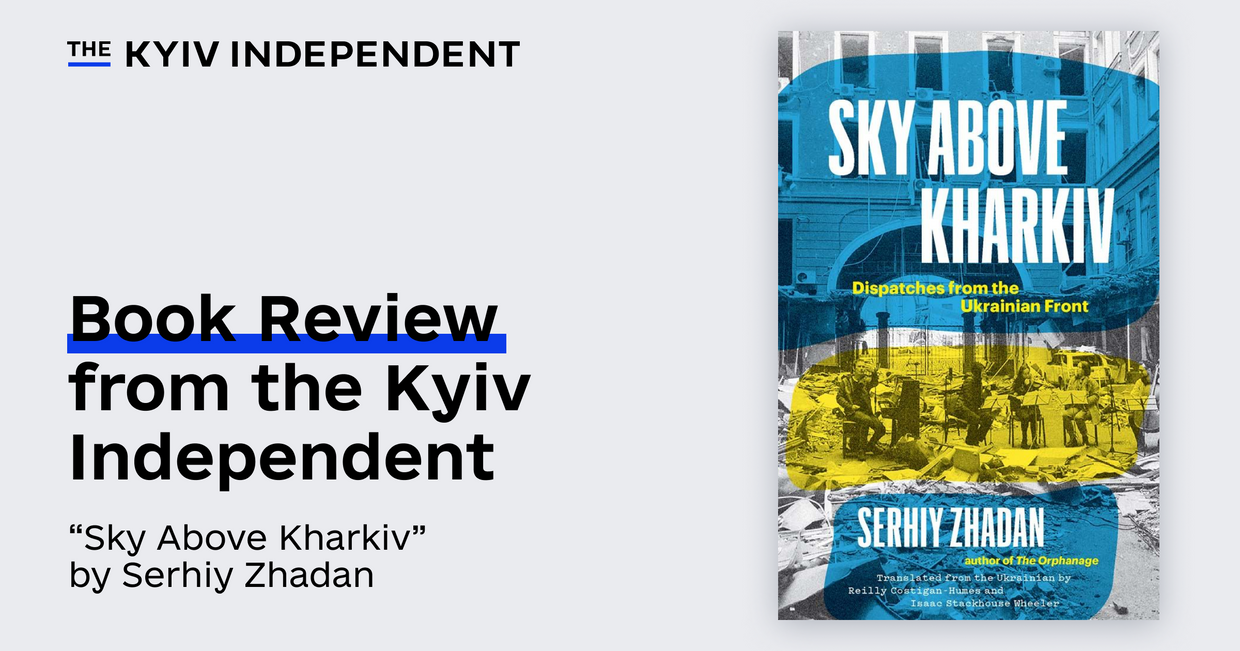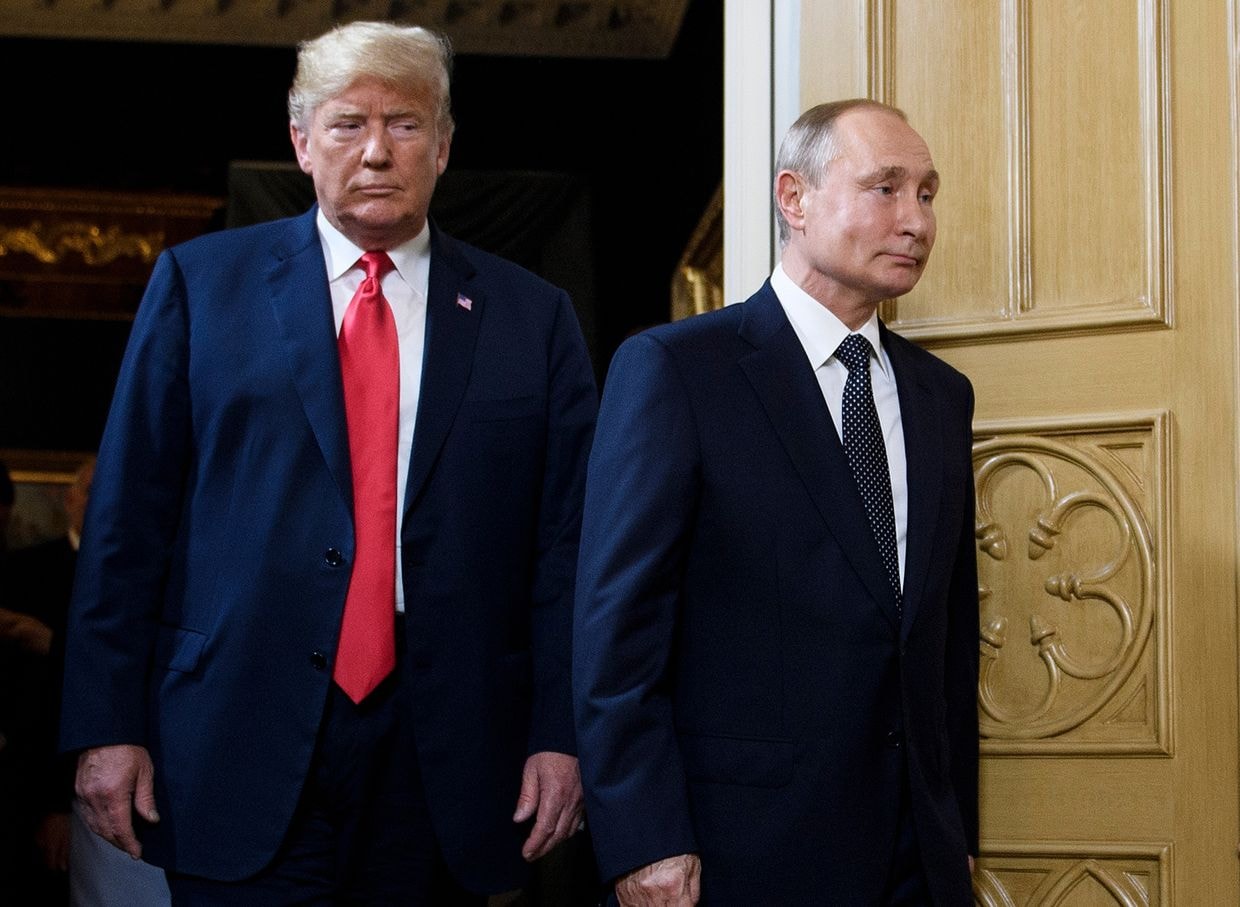
Kharkiv’s historic Derzhprom skyscraper becomes latest victim of Russian bombardments
"You cannot imagine New York without the Empire State Building, and you cannot imagine Kharkiv without Derzhprom"
A person takes a photo of the damaged Derzhprom building, a historic Soviet skyscraper, following a missile attack in Kharkiv, Ukraine on Oct. 29, 2024. (Ivan Samoilov / AFP via Getty Images)
Late on Oct. 28, an explosion rang out in the center of Kharkiv, Ukraine’s second-largest city.
Situated just over 30 kilometers (19 miles) from the Russian border, loud explosions have become part of daily life in Kharkiv as Russia continues to attack the city with drones, missiles, and aerial bombs.
This time, the Russian bomb hit an iconic 13-story building situated in the very heart of the city, known as Derzhprom, or the State Industry House.
Completed in 1928, Derzhprom was one of the first skyscrapers built in Eastern Europe and is internationally renowned for its constructivist design of reinforced concrete and glass. At the time of its completion, it was the tallest building in the Soviet Union.
Preliminary evidence suggested that Russian forces used a FAB-500 aerial bomb fitted with a glide kit – a 500-kilogram, high-explosive warhead designed to destroy targets like military headquarters, warehouses, and reinforced concrete structures – to hit the nearly 100-year-old building.
In 2017, Derzhprom was included in the preliminary list of UNESCO World Heritage, and after Russia’s full-scale invasion, was placed under provisional enhanced UNESCO protection.
The strike injured nine people, severely damaged Derzhprom’s facade, and shattered dozens of windows, leaving the offices inside covered in a layer of dust and rubble.
Kharkiv’s pride
“For people from Kharkiv, Derzhprom is like our Statue of Liberty, or Eiffel Tower, or Buckingham Palace,” Viktoria Grivina, a PhD researcher on Kharkiv at the University of St Andrews and a Kharkiv local, told the Kyiv Independent.
The building was constructed when Kharkiv was the capital of the Ukrainian Soviet Socialist Republic – a short-lived period between 1919 and 1934, after which the capital was moved to Kyiv.
“Even though it was a puppet state, among intellectual circles there was an aspiration that this new innovative construction would be part of a new Ukraine,” Grivina said.
The sprawling, 63-meter-high building was originally intended to house Soviet bureaucracy in the modern capital. The architecture reflects this sense of modernism with clean white lines and stark, futuristic glazing, echoing the contemporary Bauhaus art movement and architects like Le Corbusier.


Derzhprom is not only a “marvelous masterpiece of modern architecture, which still I would say can be compared to a lot of contemporary buildings in the world,” but it's also “a miracle of engineering,” Jenia Gubkina, a Ukrainian architect and architectural historian from Kharkiv, who now teaches at the Bartlett School of Architecture in London, told the Kyiv Independent.
“It was one of the main buildings of interwar modernism history, not only Soviet history or Ukrainian history, but world architectural history in the 20th century. You can open any book on the history of 20th-century architecture, and you will find a picture of Derzhprom.”
"You can open any book on the history of 20th-century architecture, and you will find a picture of Derzhprom."
“In Kharkiv, we are proud of this building as it's the result of the work of a lot of engineers, mathematicians, economists, politicians, and builders and constructors, not just architects,” Gubkina said.
Derzhprom’s architects were not from Kharkiv, but the workers perfecting this new reinforced concrete construction were locals, including the head engineer, Pavlo Rottert. “So this is a certain point of pride,” Grivina added.
Derzhprom in wartime
The motto “Kharkiv is reinforced concrete” came into prominence after February 2022, when Kharkiv resisted Russia’s onslaught despite being so geographically close to the border.
Derzhprom reflects the idea that people from Kharkiv are also built “from this reinforced concrete, we are people of steel, which is not true, of course, because for us it is still a tremendous blow,” Grivina added.
The building was heavily damaged in World War II, with Nazi occupying forces attempting to destroy the building as they retreated in August 1943. The reinforced concrete building withstood the damage. After the fall of the Soviet Union, the building underwent years of restoration to restore its former glory.
The building “wasn't destroyed during World War II, and now Russians are trying to destroy it," Volodymyr Tymoshko, the head of the Kharkiv regional police, told a Kyiv Independent reporter on the ground shortly after the strike.

Kharkiv Mayor Ihor Terekhov echoed this sentiment, commenting to reporters that “not even (Adolf) Hitler was able to do what the Russians have done.”
Derzhprom is located on Svobody (Freedom) Square, one of the largest squares in Europe. On the other side of the square is the regional administration building, which was targeted in a Russian attack in the first weeks of the full-scale invasion.
The missile strike on the regional administration building on March 1, 2022, killed 29 people and, injured 35 others, and left much of the imposing building in rubble. The strike also damaged Derzhprom's windows. Part of the building was damaged in another attack on the city center in January 2024.
The latest strike left the building more scarred than ever. Surveying the broken glass and rubble after the strike, the head of Derzhprom, Mykola Chekhunov, told Suspilne that the repairs to the windows would be tackled first. “I love this building. It's offensive to the point of tears,” he added.
Kharkiv's unprotected heritage
As of Oct. 16, UNESCO has verified damage to 457 cultural sites in Ukraine, including 231 of historical and/or artistic interest.
UNESCO’s list of damaged sites in Kharkiv includes the “Slovo” building, which was constructed in 1929, the Kharkiv Art Museum, the Kharkiv National Academic Opera and Ballet Theater, as well as multiple churches, libraries, and historic apartment buildings.
The attacks on cultural heritage are a repeated tactic of Russia’s war and represent a tactic of genocide, Gubkina said.
“It’s not only the killing of children, elderly people, or soldiers, not only the occupation of our land and expropriation of our assets but the destruction of our cultural heritage and built environment and immovable heritage.”
“We can’t evacuate cultural sites. They are where they are, unfortunately.”
The lack of action by international organizations like UNESCO is also disappointing to Kharkiv’s architectural community.
Derzhprom is included on UNESCO’s “List of Cultural Property under Enhanced Protection,” but according to Gubkina, “nobody knows what this status actually means and what kind of specific protection.”
Both legally and physically, Derzhprom has no protection from Russian attacks.
For now, Derzhprom is damaged but still standing. According to Kharkiv Oblast Governor Oleh Syniehubov, the local authorities are in contact with UNESCO, American philanthropist Howard Buffet, and other international partners regarding covering the cost of repairs.
“You cannot imagine New York without the Empire State Building, and you cannot imagine Kharkiv without Derzhprom,” Grivina said.

Note from the author:
Hi, this is Elsa Court, thank you for reading this article. Much of the world's attention might have moved on from Russia's invasion, but we believe it's important to continue reporting on the damage inflicted on Ukraine's people and its heritage. If you appreciate this reporting, please consider supporting us or becoming a member of the Kyiv Independent's community.












